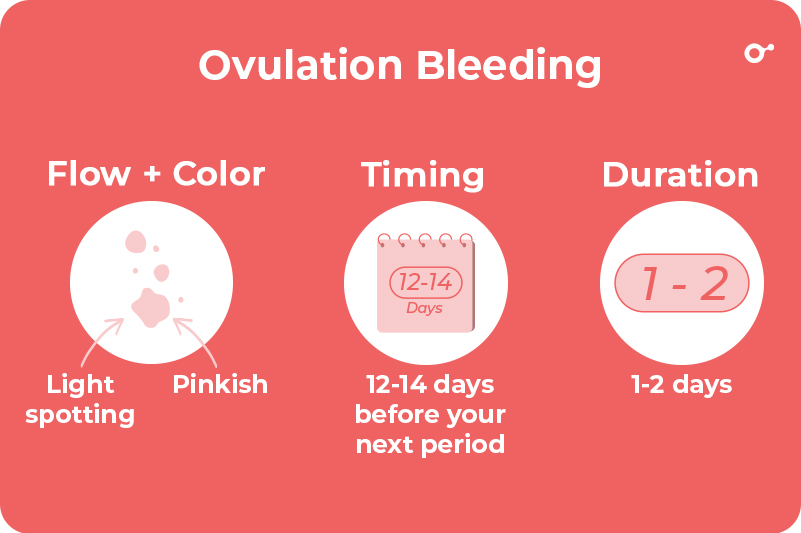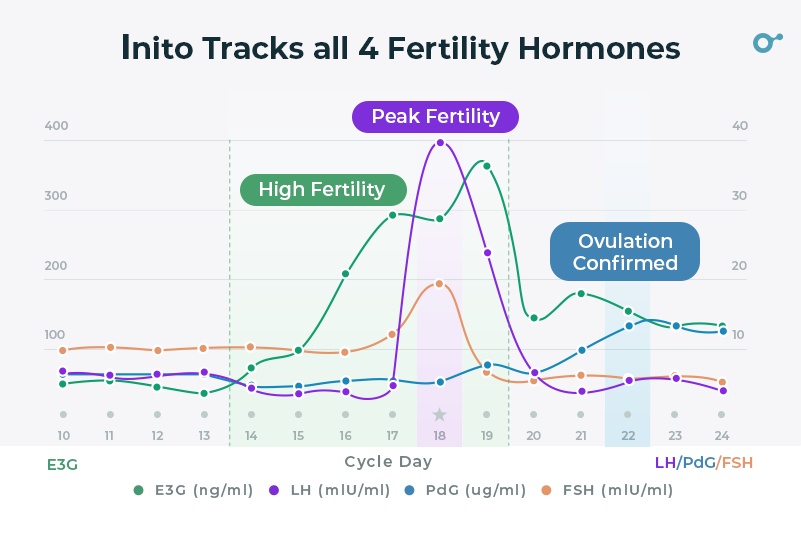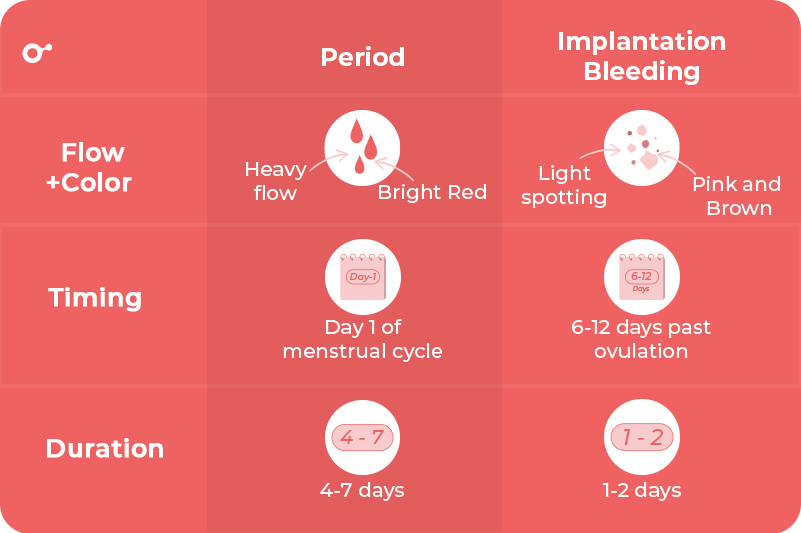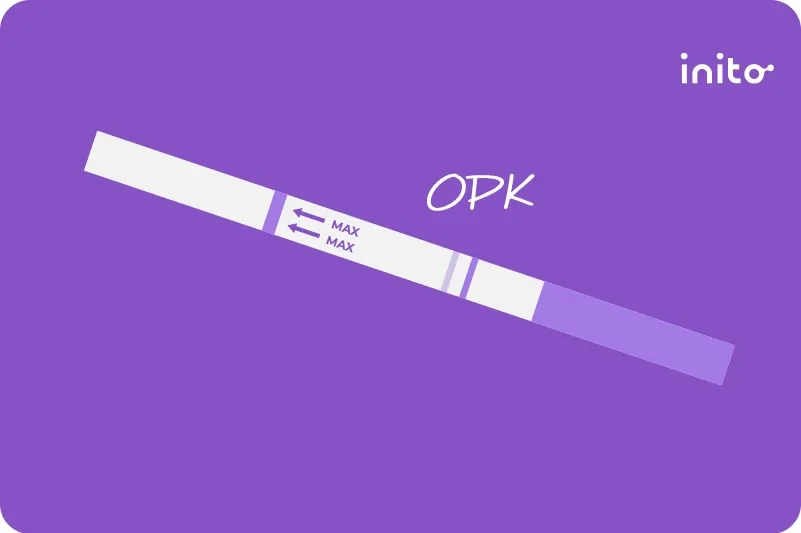Content table
Vaginal bleeding between periods is called “spotting”.
These droplets of blood may annoy you (thanks to it staining your favorite lace underwear). Or it might concern you that something is wrong.
While we can’t help out with your ruined underwear, we can give you all the information you need about this irregular bleeding.
As you’ll read in this blog, spotting after periods may be normal or a sign of a more serious medical condition. Let’s dive into the many causes, treatments, and how to know when to see a doctor.
What is ‘spotting’?
“Spotting” is light bleeding that appears as spots on your undies.
The bleeding is not enough to require the use of a pad or pantiliner. Only a few drops of blood are seen, and it typically lasts for 1-2 days at a time.
Spotting is unpredictable and can occur at random times between your periods. It could happen a few days after your period ends. Or it could occur a few days before you expect your next period to begin.
It differs from period bleeding in many ways.
How can I differentiate between spotting and my period?
The amount, color, and source of period blood are different from that of spotting.
Take a look at this table comparing the differences between spotting and your period.
Characteristics | Periods | Spotting |
Duration | 2-8 days | 1-2 days |
Quantity | Moderate to heavy bleeding | Light bleeding |
Color | Reddish or brownish | Red, pink, or brown. Varies depending on the underlying cause. |
Source | Uterus (Shedding of the endometrial lining) | Uterus, cervix, or vagina |
The key takeaway is spotting is lighter and does not last as long as a period.
And in many cases, you won’t experience cramping with spotting.
So why does spotting occur?
What are the causes of spotting?
There can be several causes of spotting. Let’s take a look at some of them.
Birth control
Birth control is an effective form of contraception. But almost all forms of hormonal birth control are associated with spotting, sometimes referred to as breakthrough bleeding.
The following forms of birth control are associated with spotting:
- Copper IUD
- Levonorgestrel-IUD
- Hormone implants
- Hormone injections
- Progestin-only pill
Breakthrough bleeding occurs more often with low-dose pills, hormone implants, and hormonal IUDs. This may be due to the low dose of estrogen and progesterone. Their levels may not be high enough to keep bleeding at bay.
The good news is spotting mostly occurs during the 3-6 months after starting a new birth control method. Once your body adjusts to the change in your hormone levels, you should experience less spotting.
To reduce breakthrough bleeding, consider the following tips:
- Take your birth control pills consistently at the same time every day.
- Talk to your doctor about scheduling a period a few times throughout the year if you are on continuous hormones or use the ring. This helps shed the built-up uterine lining, if any.
- Do not smoke.
Read more: Nicotine and birth control: does nicotine affect birth control?
Ovulation
You might experience spotting around the time of ovulation. This is because of the significant hormonal shift that occurs after your ovary releases an egg.
Once ovulation is complete, the follicle responsible for releasing the egg leaves behind a structure called the corpus luteum. The corpus luteum begins secreting progesterone which is necessary to prepare your body for pregnancy.
This spike in progesterone can cause the pesky symptom of ovulation bleeding.
Ovulation bleeding usually occurs 12-14 days before your next period. It’s light pink or red and typically lasts for 1-2 days.

- You may experience other ovulation symptoms such as the following:
- Egg-white cervical mucus
- Ovulation pain
- Increase in basal body temperature
- Higher sex drive
It could be difficult to identify ovulation bleeding if you don’t know when you ovulate.
But don’t fret.
The Inito Fertility Monitor has your back. It helps track your menstrual cycle and confirm your ovulation day.
Inito measures the following four hormones to provide insights into your fertility:
- Follicle-stimulating hormone (FSH)
- Estrogen
- Luteinizing hormone (LH)
- PdG (urine metabolite of progesterone)
The Inito Fertility Monitor measures estrogen and LH to predict the day you will ovulate. And tracks PdG to confirm you actually ovulated. Check out this page to learn more.
Read more: Ovulation bleeding vs. Implantation bleeding: How long does it last?

Implantation
Implantation bleeding is caused when an embryo burrows into the uterine lining. Small blood vessels in the uterine wall may rupture when the fertilized egg implants. This can lead to light spotting.
Typically, implantation occurs around 8-10 DPO. Implantation bleeding is usually light pink or brown. Lasts for 1-2 days. And may be accompanied by implantation cramps.

You may experience other implantation symptoms like the following:
- Fatigue
- Mood swings
- Breast tenderness
- Decreased BBT
- Constipation and bloating
Read more: Implantation: Everything You Need to Know
Infections
You may not typically associate blood with an infection. But sexually transmitted infections like chlamydia and gonorrhea may cause vaginal bleeding or spotting.
Chlamydia and gonorrhea often occur together and cause mild symptoms. You might even think you only have a urinary tract infection.
However, you may notice other common symptoms of chlamydia and gonorrhea like the following:
- Yellow vaginal/urethral discharge
- Painful urination
- Spotting
- Anal discharge, bleeding, or pain
These STIs can cause cervix inflammation (cervicitis) which can cause the cervix to bleed.
Treatment with antibiotics is of utmost importance to prevent pelvic inflammatory disease (PID). PID can cause complications such as ectopic pregnancy, infertility, and the formation of scar tissue in the fallopian tubes.
Miscarriage
You could be experiencing a miscarriage if you start bleeding after confirming pregnancy.
Miscarriages most commonly occur in the first 3 months of pregnancy.
Bleeding associated with miscarriage is heavy and often accompanied by big clots. You may also experience the following symptoms:
- Severe back pain
- Lower abdominal pain
- Weakness
- Nausea and vomiting
If you experience any vaginal bleeding during pregnancy, please contact your OB/GYN.
Read more: What Does Miscarriage Look Like? Know The Difference Between Miscarriage and Period
Uterine fibroids
Uterine fibroids or leiomyomata are noncancerous growths in the uterus. These are the most common noncancerous tumors that affect women.
While the main cause of uterine fibroids is not known, these are some risk factors that may increase your risk of developing them:
- Early menarche (started periods at a young age)
- Nulliparity (never given birth)
- Obesity
- Late menopause
- Positive family history of uterine fibroids
Although they are noncancerous, they can still cause a variety of unpleasant symptoms. If you have uterine fibroids you may experience longer, heavier periods and spotting in between periods.
You may also experience pain during sex, urination, and bowel movements.
There are multiple treatment options for fibroids. The size and location of the fibroids dictate which treatment option is best. Here are a few options your doctor may discuss with you:
- Hormonal contraceptives such as oral contraceptive pills or the levonorgestrel-IUD
- GnRH agonist medication
- Non-steroidal anti-inflammatory drugs (NSAIDs)
- Surgery – endometrial ablation, myomectomy, MRI-guided focused ultrasound surgery, or hysterectomy
Read more: Can I get pregnant with a fibroid and if so, how?
Perimenopause
Your hormones fluctuate and change during perimenopause. FSH and LH increase while progesterone and estrogen decrease. This causes your menstrual cycle to become a bit wacky.
Some months your ovary will release an egg. Other months it won’t.
This absence of ovulation can cause your uterine lining to build up. You’re more likely to experience spotting in between periods because of this.
Note – after menopause, you should not experience abnormal vaginal bleeding. If you notice bleeding, please consult your doctor.
Injury
Scrapes and cuts on your skin are known to cause bleeding. The same goes for your vagina.
You can experience injury to your vagina that results in bleeding.
You may experience spotting after sexual intercourse if not enough lubrication is used. Another great reason to lube it up!
Or you could experience tears in your vaginal wall if you insert a foreign object in your vagina. Another great reason to use sex toys instead of random items!
The spotting should end after a couple of days, but if symptoms persist or you notice foul-smelling discharge, please consult your doctor.
Cancer
In rare cases, bleeding between periods is caused by cancer. Vaginal, cervical, endometrial, and uterine cancer can cause spotting.
Other symptoms of these cancers may include the following:
- Unusual/foul-smelling vaginal discharge
- Pelvic pain
- Weight loss
- Pain during urination or sex
Cancer treatment includes chemotherapy, radiation, surgery, or a combination of the three.
Should I be concerned?
Occasional spotting that is not accompanied by other symptoms is not usually a cause for concern.
As mentioned above, spotting can have normal causes such as ovulation, implantation, birth control, or perimenopause.
However, you may require medical attention if you experience any of the following symptoms along with heavy bleeding:
- Severe pain
- Weakness
- Nausea and vomiting
- Abnormal vaginal discharge
- Pelvic pain
- Pain during sex
- Pain while peeing or pooping
How can I manage spotting?
Spotting is mostly inconvenient since it’s only a couple of drops of blood here and there.
If you’re worried about staining, you may want to use a panty liner.
But remember, if you saturate a panty liner or pad, then it’s not spotting. In this case, you should consult your healthcare professional.
Key takeaways
- Spotting occurs between periods and usually lasts 1-2 days.
- Breakthrough bleeding is not typically a cause for concern if not accompanied by other symptoms.
- Spotting may be caused by hormonal contraceptives, ovulation, implantation, infection, miscarriage, uterine fibroids, perimenopause, injury, or cancer.
- Spotting after menopause is considered abnormal bleeding and you should seek medical advice.
- You can use a pantyliner to protect your underwear from stains. But remember, spotting should not saturate a panty liner or pad.
Was this article helpful?
- Barjon K, Mikhail LN. Uterine Leiomyomata. [Updated 2023 Aug 7]. In: StatPearls [Internet]. Treasure Island (FL): StatPearls Publishing; 2023 Jan-. Available from: https://www.ncbi.nlm.nih.gov/books/NBK546680/
- Chlamydia, Gonorrhea, and Syphilis (n.d.). www.acog.org. Retrieved December 9, 2023, from https://www.acog.org/womens-health/faqs/chlamydia-gonorrhea-and-syphilisbout-breakthrough-bleeding-with-birth-control
- Dugas C, Slane VH. Miscarriage. [Updated 2022 Jun 27]. In: StatPearls [Internet]. Treasure Island (FL): StatPearls Publishing; 2023 Jan-. Available from: https://www.ncbi.nlm.nih.gov/books/NBK532992/
- Lee, S. (2015). Symptoms of uterine cancer. Canadian Cancer Society. https://cancer.ca/en/cancer-information/cancer-types/uterine/signs-and-symptoms
- Villavicencio, J., & Allen, R. H. (2016). Unscheduled bleeding and contraceptive choice: increasing satisfaction and continuation rates. Open access journal of contraception, 7, 43–52.https://doi.org/10.2147/OAJC.S85565
- What You Should Know About Breakthrough Bleeding With Birth Control. (n.d.). www.acog.org. https://www.acog.org/womens-health/experts-and-stories/the-latest/what-you-should-know-about-breakthrough-bleeding-with-birth-control











